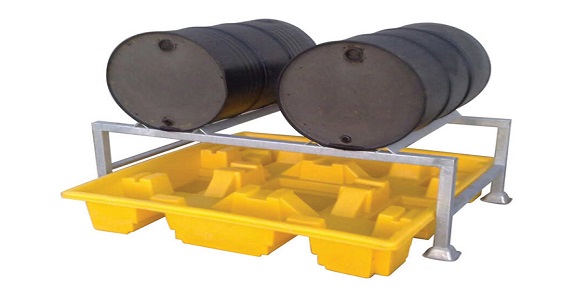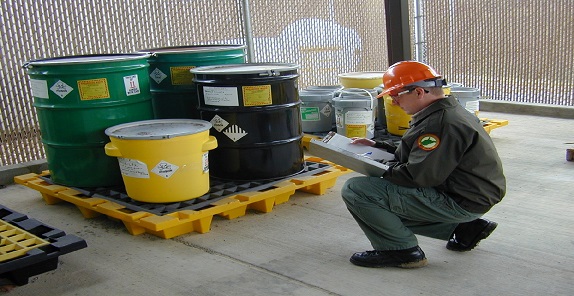Chemical drums may allow you to store a sizeable level of chemicals, but with this also comes an increased level of risk. Since a higher volume of dangerous substances are being stored, the consequences of a leak or spill are far more consequential. As a result, the team at Safety Storage UK have decided to use our industry expertise to share 10 top tips for handling and storing the containers.
1.Use Secondary Containment Measures
One of the most essential measures you can take for secure storage is using secondary containment measures. Use bunded storage to ensure any leaks or spills are immediately contained, before they cause damage to your building or harm to your workers.

2.Use Sturdy Warehouse Racks
Full chemical drums can hold hundreds of litres of hazardous substances. Multiply this by however many drums you’re storing, and you most likely have an immense weight sitting on your storage racks. Therefore, it’s important to check that the shelving within your chemical drum storage unit can safely hold the drums’ combined mass.
3.Designate Specific Areas
Having a designated set down area helps your staff inspect new chemicals, and their safety data sheets. It ensures the new substances are separated from the rest until they are deemed secure, preventing any mix-ups. Additionally, having a designated and controlled area for transferring the chemicals from one set of packaging to another will also help avoid accidents from occurring.
4.Draft an Emergency Response Plan
Since drums contain such a high volume of chemicals, having an emergency response plan is even more important. Draft a response plan to cover key points, such as containment, evacuation and clean-up, and ensure all of your staff are well versed in the protocol.
5.Use Clear Labels
One of the most important aspects of secure chemical storage is also one of the easiest to implement. Ensure all of the drums are clearly marked with their contents, and any appropriate warning symbols. This prevents mix-ups between substances, and alerts workers to potential dangers when handling the chemicals.

6.Schedule Regular Inspections
Drums can be susceptible to rust, leaks or other damage in even the most secure chemical drum store. Regularly inspect the containers to check for security risks, as early intervention is key in accident prevention.
7.Segregate the Chemical Types
Certain chemicals can have volatile reactions to one another, and so should be stored separately. While this may seem unnecessary when they’re securely contained in drums, if leaks occur the results can be disastrous.
8.Use Drum Covers
If your drums are stored outside, invest in drum covers to protect the integrity of your chemicals. These secure your chemicals against the elements, and prevent weather damage from occurring.
9.Train Your Personnel
The majority of chemical accidents happen during transportation. As a result, only trained fork lift drivers should be allowed to move the substances within your bunded drum store, to minimize the risk.
10.Use Pallets Outdoors
If your bunded drum storage unit is located outdoors, make sure you store the drums on pallets. This ensures they’re not submerged in water during bad weather, thus protecting the integrity of the containers.
For more information on handling and storing chemical drums, read our previous articles on safe chemical storage. Or, contact our expert team for obligation free advice.